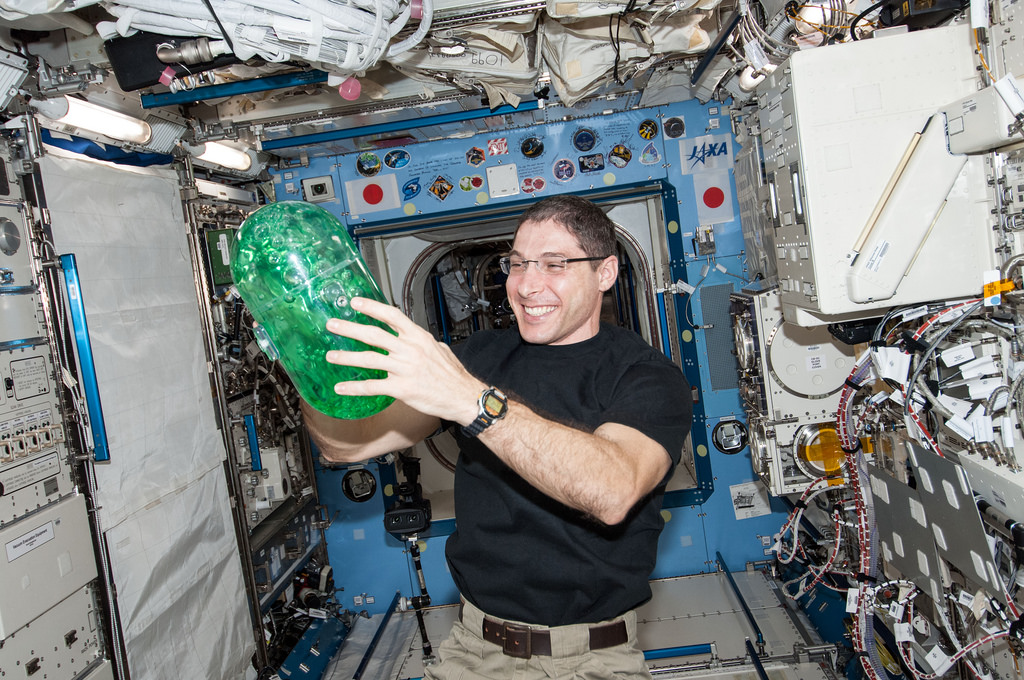Sloshed in Space

Studying the Behavior of Green Water on the International Space Station May Lead to Safer Rockets
Robots and astronaut power are being used to churn, splash and slosh green water in microgravity aboard the International Space Station.
Besides making really cool, gooey-looking waves inside clear, plastic capsules about the size of a two-liter soda bottle (the liquid is actually water dyed with food coloring), the science behind the project developed by Florida Institute of Technology scientists, NASA engineers and researchers at the Massachusetts Institute of Technology (MIT), may help NASA engineers build better fuel tanks.
Fluid sloshing inside a container acts differently in space than it does on Earth. Data on how liquid fuel moves in microgravity as a rocket enters space may improve the ability of scientists and mission planners to develop higher performance and safer space propulsion vehicles.
The experiment, called “SPHERES Slosh” utilizes robots called Synchronized Position Hold Engage Reorient Experimental Satellites (SPHERES) to control the motion of a container partially filled with liquid. The container undergoes motions that are representative of the actual motions of large rockets and spacecraft during orbital operations in space such as barbecue rolls, attitude adjustments and engine shut down.
Real rocket fuel is not allowed inside the ISS, of course, but water has a similar viscosity to liquid rocket propellant and its density is similar to liquid oxygen, which also is key to rocket fire.
“The experiment worked flawlessly during our checkout session and our preliminary data is looking very good,” said Dan Kirk, a Florida Tech faculty leader on the project.
Hector Gutierrez, a Florida Tech principal investigator and director of the ASAP Laboratory, added, “NASA is pleased with the data so far. We completed a fourth science session two weeks ago and we have two more to go. NASA-KSC has expressed interest on supporting more science sessions in the future, so the hardware will remain onboard ISS for the foreseeable future.”
The strange and interesting ways this green water behaves in space will likely help create more effective rockets as NASA moves forward to its deep-space dreams of Mars and beyond.





